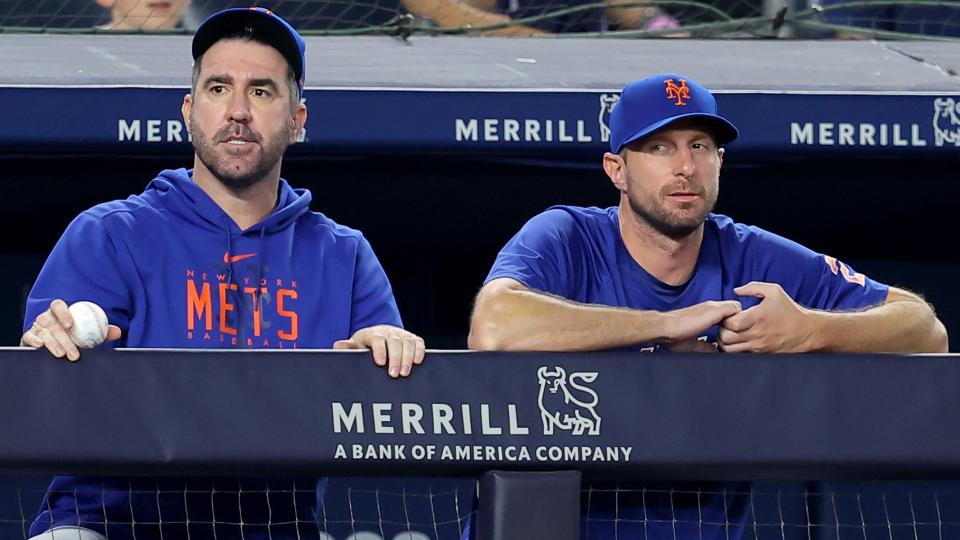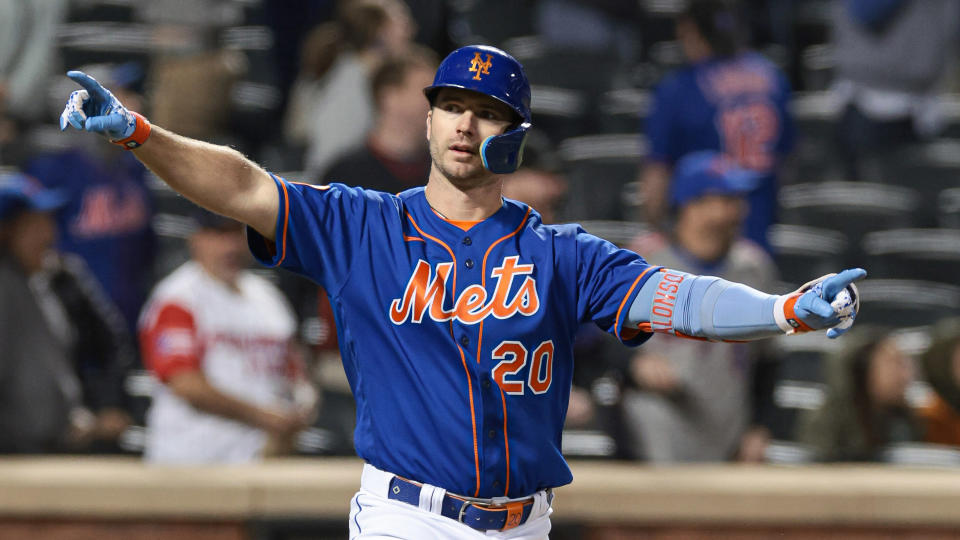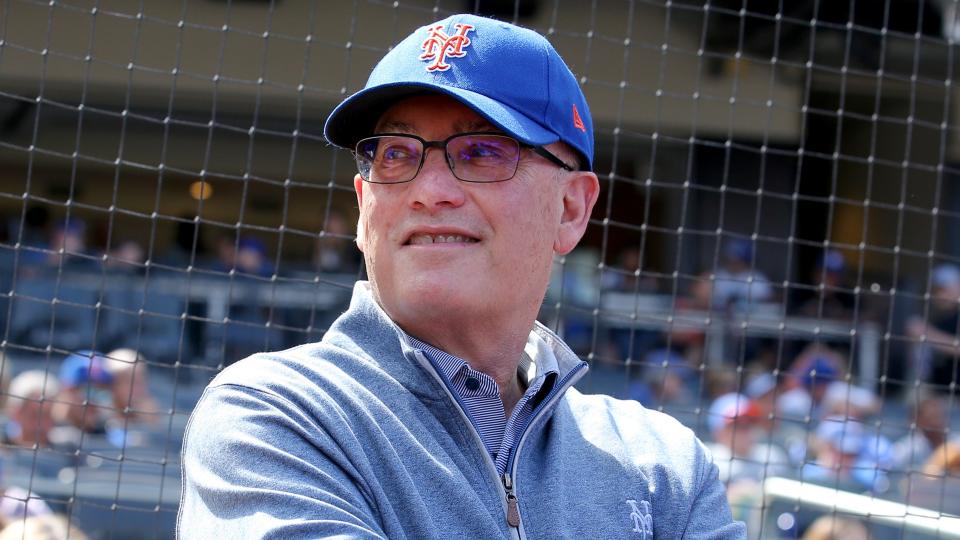Analyzing Mets' payroll situation for 2024 MLB season and beyond
The Mets came very close to exceeding the top luxury tax threshold during the 2022 season, when their payroll wound up just shy of $288 million.
Ahead of the 2023 season, New York blew well past the top threshold of what was unofficially dubbed the "Steve Cohen tax" when they went on an offseason spending spree that included adding Justin Verlander, Kodai Senga, David Robertson, and Jose Quintana, and retaining Edwin Diaz, Brandon Nimmo, and Adam Ottavino.
The aforementioned spending brought the Mets' Opening Day payroll to $330.6 million -- a record for any team in the four major sports in the United States.
Of course, the 2023 season was a disaster, and Verlander and Max Scherzer were both traded at the deadline.
Although the Mets ate significant money in both of those trades in order to maximize the prospect return -- which was massive -- they still shaved a serious chunk off their payroll commitments owed to Verlander and Scherzer for 2024, and potentially half of the money owed to Verlander in 2025.
For Scherzer, the Mets ate $20.83 million of the $43.3 million he was due in 2024. As part of the trade to the Rangers, Scherzer agreed to pick up his 2024 option, making the money guaranteed and allowing the Mets to eat a large portion.
For Verlander, the Mets ate $25 million of the $43.3 million he's owed in 2024. As it pertains to 2025, which is a vesting option year, the Mets will pay $17.5 million of the $35 million that will be owed if the option vests -- which will happen if Verlander pitches at least 140 innings in 2024.

In 2024, the Mets will have roughly $40 million off the books that otherwise would've been paid to Scherzer and Verlander.
In 2025, they'll have an additional $35 million to spend if Verlander's option doesn't vest or an extra $17.5 million to spend if it does.
With Verlander and Scherzer out of the picture, and the Mets aiming to return to contention next season, let's break down the payroll situation for 2024 and beyond...
SALARY COMMITTED FOR 2024
Per Cot's Baseball Contracts, the Mets are projected to have roughly $251 million committed to the payroll for 2024 before making any moves this offseason. That includes player benefits, the money owed to 40-man players in the minors, and other things that are factored in for luxury tax purposes.
The $251 million figure also includes the estimated salary that will be owed to the arbitration-eligible players who are retained. But since the Mets will likely part ways with several of those players, the number is inflated beyond what it will be.
It also includes the $6.5 million that will be owed to Brooks Raley if the Mets pick up his option (a very safe bet) and the $6.75 million that will be owed to Ottavino if he picks up his player option (a likely bet).
And of course, the $251 million includes the money owed to Verlander and Scherzer.
Assuming Raley and Ottavino return, the money committed to the payroll before factoring in the arbitration-eligible players is around $195 million.
WHAT WILL THE ARBITRATION-ELIGIBLE PLAYERS MAKE?
After letting go of Rafael Ortega, Danny Mendick, and Michael Perez, the Mets have 13 players eligible for arbitration, including one of their most important core pieces.

The 13 players are Pete Alonso, Daniel Vogelbach, DJ Stewart, David Peterson, Drew Smith, Joey Lucchesi, Trevor Gott, Elieser Hernandez, Luis Guillorme, Tim Locastro, Jeff Brigham, John Curtiss, and Sam Coonrod.
Aside from Alonso, Peterson, Lucchesi, and perhaps Stewart and Smith, it's hard to find another arbitration-eligible player who's a slam dunk to be offered arbitration.
A team can offer arbitration to a player and then trade that player. So the Mets can tender contracts to players who might not be in their plans.
According to the MLB Trade Rumors algorithm that "looks at the player’s playing time, position, role, and performance statistics while accounting for inflation," here's what the Mets' arbitration-eligible players are projected to make in 2024...
Pete Alonso: $22 million
Daniel Vogelbach: $2.6 million
Drew Smith: $2.3 million
David Peterson: $2 million
Joey Lucchesi: $2 million
Trevor Gott: $2 million
Luis Guillorme: $1.7 million
Elieser Hernandez: $1.6 million
Tim Locastro: $1.6 million
DJ Stewart: $1.5 million
Rafael Ortega: $1.4 million
Danny Mendick: $1.1 million
Jeff Brigham: $1.1 million
John Curtiss: $1 million
Sam Coonrod: $900,000
Michael Perez: $800,000
While Alonso's name continues to be floated around in the trade rumor mill because he's set for free agency after 2024, it seems like a near-certainty that he'll be the Mets' first baseman on Opening Day.
HOW MUCH MONEY IS THERE TO ADD PLAYERS THIS OFFSEASON?
If Alonso is back, which feels like close to a lock, you can add roughly $22 million to the $195 million the Mets already have committed to the payroll before counting the other players they might offer arbitration to. That brings them to around $217 million.
For argument's sake, let's say New York offers arbitration to Smith, Peterson, Lucchesi, Gott, Stewart, and Coonrod. That would tack another $11 million or so to New York's payroll, for a total of roughly $228 million before accounting for what they do via free agency and trade.
While $228 million is a relatively eye-popping number, it's still over $100 million lower than what the Mets' Opening Day payroll was in 2023.

And when you remember president of baseball operations David Stearns' statement a month ago that the Mets will be competitive in 2024 -- and that being competitive to him means being a legitimate playoff contender -- it's clear that the team will be heavily involved in the free agent market.
Specifically, the Mets are expected to be among the top bidders for Japanese ace Yoshinobu Yamamoto, and could also be right in the middle of the sweepstakes for Shohei Ohtani.
The Mets might not enter 2024 with the same expectations they entered 2023 with, and they very likely won't sign the same number of high-profile names they inked last offseason (or extend as many), but the ability is there to both make splashes and address their needs in less eye-popping ways.
WHAT ABOUT EXTENSIONS FOR UNDER-CONTROL PLAYERS?
Last offseason, I wrote that Alonso and Jeff McNeil were the only players to keep an eye on as it related to possible extensions, and the Mets inked McNeil to a long-term deal soon after.
This offseason, the only player likely to be under serious consideration for an extension is Alonso, who -- as is noted above -- is a year from free agency.
But even before Alonso switched agencies earlier this offseason to be represented by Scott Boras, it felt like an iffy proposition that he and the Mets would agree to an extension with him so close to being able to test the open market.
However, Alonso switching to Boras should not concern Mets fans. Yes, Boras will work tirelessly to get Alonso every last dollar. But the Mets have a great working relationship with Boras, with whom they worked on recent deals for Scherzer and Nimmo.

If the Mets want Alonso to be a career Met, the presence of Boras is unlikely to stop them from outbidding other teams for him in the event he reaches free agency.
THE PAYROLL SITUATION IN 2025 AND BEYOND
Here are the Mets' projected 40-man roster salary obligations from 2025 to 2028, via Cot's:
2025: $125.5 million
2026: $102.2 million
2027: $88.4 million
2028: $55.2 million
Because New York only has one true megadeal on the books (to Francisco Lindor) and only four other players under contract beyond 2025 (Diaz, Nimmo, Senga, and McNeil), their salary obligations are about to drop precipitously.
This should allow them to sign a player to a megadeal this offseason (perhaps Yamamoto), extend Alonso now or after the season if they so choose, and still have serious flexibility over the next several offseasons to augment the roster.
The Mets could also possibly drop below the luxury tax threshold in 2025.
In addition to their books being so clean going forward, what will also help the Mets is that a number of their high-impact prospects should be ready for the majors at some point in 2024 or 2025.
That crop of prospects includes Drew Gilbert, Luisangel Acuña, Jett Williams, and Blade Tidwell, who should join Francisco Alvarez and likely one of Ronny Mauricio or Brett Baty.
The low salaries of those players will help offset the money owed to established stars already on the roster and any star players the Mets add this offseason.
Since Cohen took over, the Mets' goal has been to become a sustainable winner that churns out legitimate talent from the minor league system year after year and supplements that talent with a smart approach via free agency and the trade market. They're not there just yet, but they're getting tantalizingly close.

